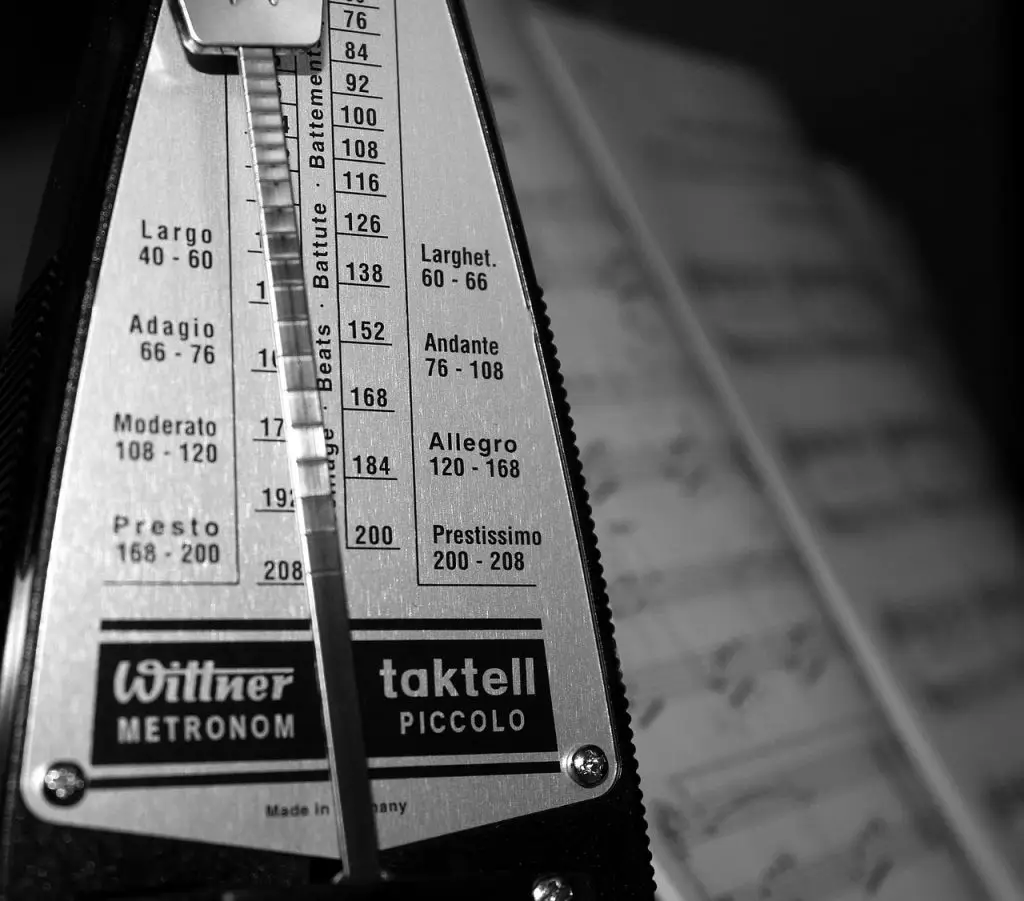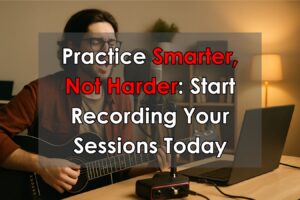When you think of ear training, most people think about practicing melodies, intervals, solfege, or some sort of pitch recognition. A lot of people don’t even think about practicing rhythm. Having a good ear for melody is certainly important but forgetting to practice rhythm is like forgetting to add eggs when making your cake. You’re missing a vital ingredient and it’s not going to be the same without it.
In this article we’re going to go over the four things you should do to help and improve your rhythm and timing.
1. Learn How To Count
Being able to count is the most important aspect of rhythm. We all operate on a grid and with rhythm, there is only one precise moment in time where the pattern you are trying to play is supposed to work. If you don’t understand how to count in time properly, how can you identify when you’re making a mistake? How can you communicate to others when they’re making a mistake? The short answer is “You can’t.”
So what do I mean by knowing how to count? Well first off you should know how many beats belong in a measure as well as what time signatures mean. If you don’t know how many beats you need, then it will be difficult to stay on the same grid or timeline as the rest of your bandmates.
Second, you should understand the subdivisions or sub-beats that exist between the notes. A good place to start would be eighth notes, triplet eighth notes, and sixteenth notes. Each of those notes are worth less than one beat and will be assigned a certain syllable depending on where it lands between the beat. Learn these syllables and what the patterns should sound like so you can sound out the patterns when you have trouble completing an exercise.

2. Practice With A Metronome
The metronome has been a staple of good practice for a long long time. And for good reason too. A metronome is a device designed to keep a perfect tempo or pace. It is unwavering and will not change it’s timing to accommodate you. It is up to you to play with it.
If you are not used to a metronome whether in ear training or just through your instrument, it will likely be an unpleasant experience at first. It will probably feel like it’s all you can do to focus on the metronome much less complete your exercise or song. But I will tell you from experience that it gets much easier. When you are well practiced the metronome will seem to disappear to you because you will be so in sync and your tempo so solid that you won’t feel the metronome push against you.
Fortunately there are plenty of metronomes out there today. You can get them for free through your browser, phone, or tablet. You can get metronomes with different instruments as the click or even having a human voice count out the numbers. There is no lack of variety when it comes to what options are available today.
It’s a demanding part of the exercise but the results are worth it if you want to take your rhythm to the next level.

3. Conduct While You Practice
A conductors job is to lead the orchestra by setting the tempo and establishing what beat they are on. Having a metronome is a great start but learning to conduct while you practice takes it to the next level. It forces you to feel the beats on a different level. Different time signatures put emphasis on different beats and conducting reinforces that aspect.
Managing the coordination can be tough. You’ll likely have to start slow and work your way up but with enough practice you’ll find yourself getting the hang of it after a few weeks.
There are different patterns depending on what time signature you’re playing/practicing in. Below are a set of mirrored patterns for your arm to follow. You only need to have one arm do this so pick the arm you feel most coordinated with and give it a try.




4. Practice A Variety Of Patterns
One of the best things about ear training is its ability to get you out of your comfort zone. Practicing rhythm is no exception to this. If you are a beginner you may only practice using two or three types of notes which is perfectly acceptable. As time goes on and you amass more types of notes, you’ll find yourself having a huge variety of patterns to play.
It’s easy to get caught up in doing just one type of pattern. I’m certainly a fan of being great at one thing instead of being mediocre at ten. What does worry me though is when I see people get stuck doing a small number of patterns because it’s what their comfortable with. Exercises are not meant to keep us comfortable. They are meant to push our limits and force us to confront the things we are not good at. Make sure you’re always pushing yourself to try new combinations, new notes, new tempos, and new time signatures.
Other Posts

Home Recording on a Budget: Recording Your Practice Sessions
You’ve been working hard on your music—nailing that tricky chord change, perfecting your drum fills, polishing your vocals. But how do you really know if

Effective Practice Routines for Busy Musicians: Maximize Your Progress
Balancing music practice with a busy lifestyle can be challenging. However, by using your practice time strategically, you can still make significant progress, regardless of

Rock Guitar 101: Twenty Essential Riffs Every Beginner Should Learn
Picking up the guitar is thrilling, especially when you can quickly dive into playing iconic rock riffs. Learning classic riffs isn’t just enjoyable—it also helps